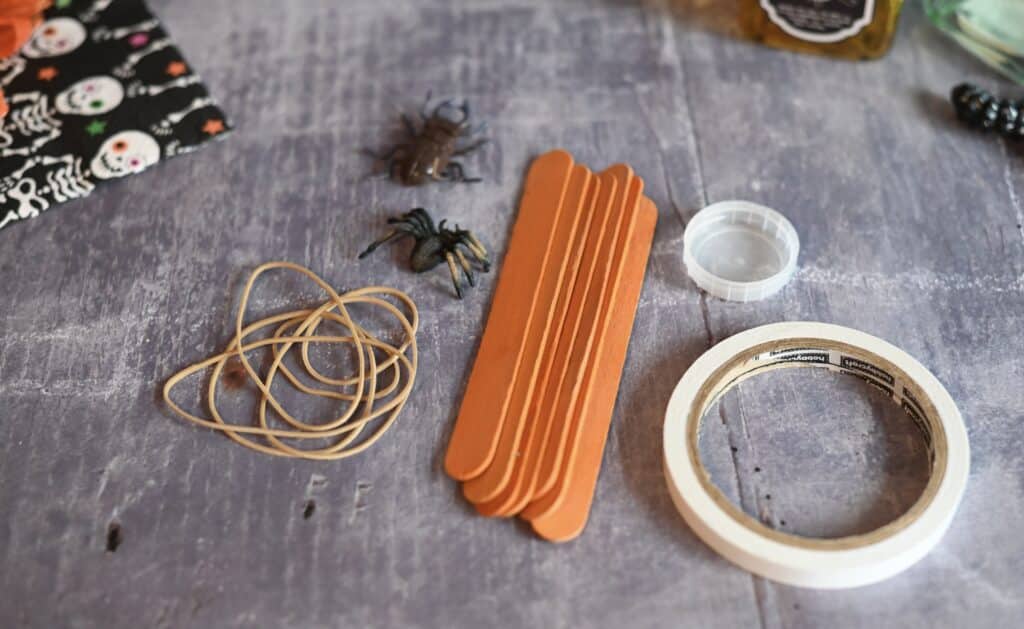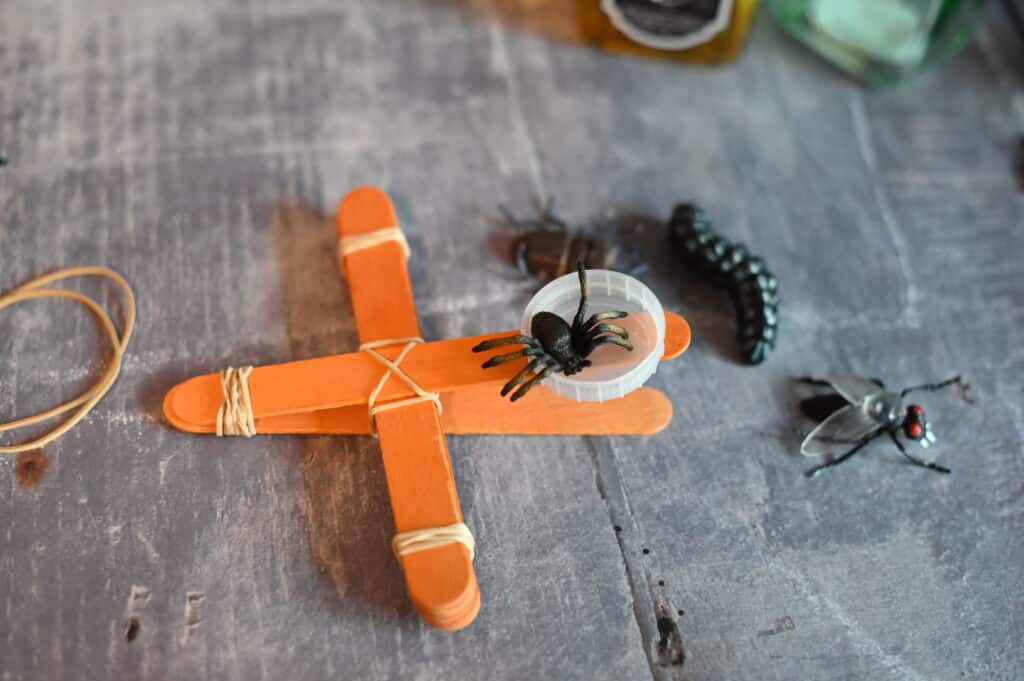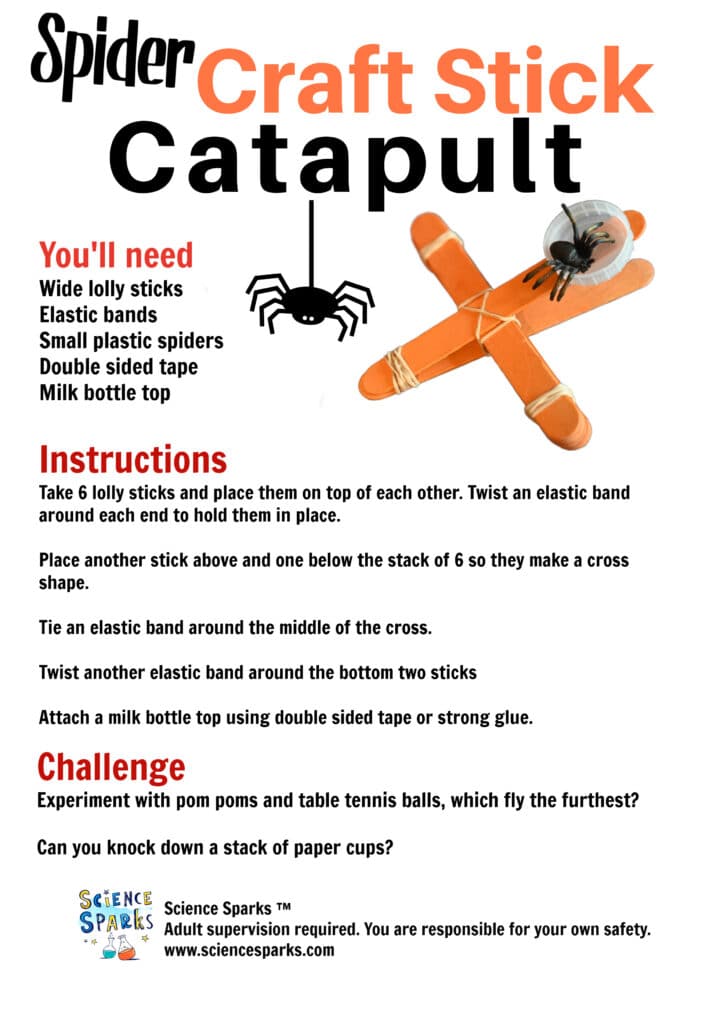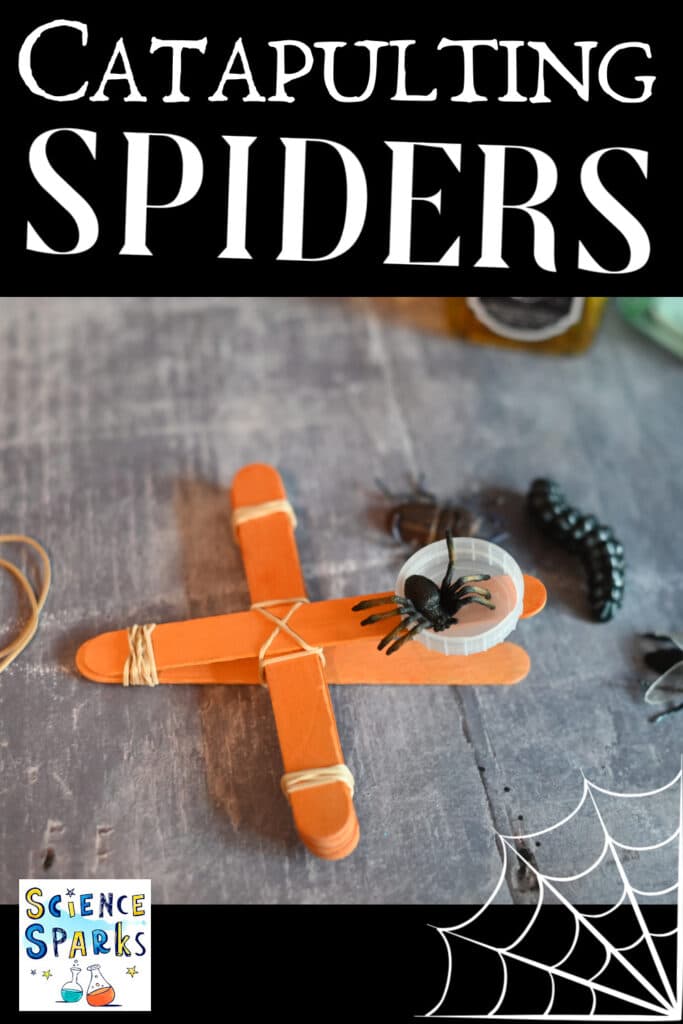Lolly stick catapults are a great hands-on science activity that’s very easy to theme for any time of year. You might have seen my snowman catapults last year. I also have golden snitch catapults, pokemon catapults and catapulting planets!
These catapulting spiders are a great hands-on STEM challenge for Halloween.
How to make catapulting spiders
You’ll need
Wide popsicle sticks/ lolly sticks
Elastic bands
Double-sided tape
Milk bottle top

Instructions
Follow my easy to follow catapult instructions. It should look like the image below when complete.

Watch the video
How do lolly stick catapults work
When you push down on the arm of the catapult, the lolly stick bends, giving it energy. When the arm is released, the energy is transferred to the spider, which flies through the air.
The further down the catapult arm is pushed, the more force is used, which gives the lolly stick more energy to transfer to the spider, making it travel further.
Get the instructions

More Halloween STEM challenges
Make a popsicle stick candy grabber. This is a brilliant Halloween engineering challenge.
Team Cartwright has a fantastic spider web science activity using wax crayons.
Have a go at my Incy Wincy Spider themed science experiments.
Finally, take a look at my full collection of Halloween STEM Challenges!

Last Updated on October 2, 2024 by Emma Vanstone

Leave a Reply